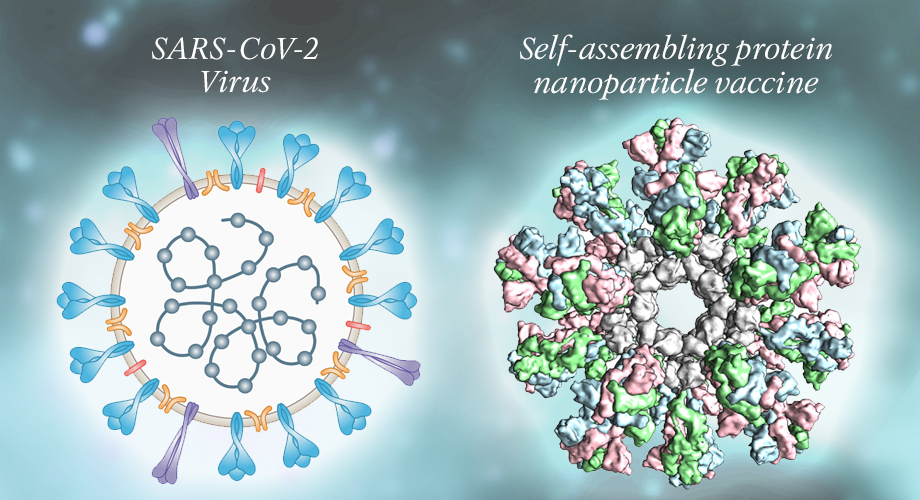
Nanoparticle vaccine for COVID-19 spurs robust immune response in preclinical tests
The novel vaccine technology, developed at Scripps Research, uses virus-like protein nanoparticles to elicit high levels of protective antibodies.
September 21, 2020
LA JOLLA, CA—In a new study that demonstrates the promise of a novel vaccine approach for COVID-19, Scripps Research scientist Jiang Zhu, PhD, showed that his protein nanoparticle technology successfully triggered a strong immune response in mice. Zhu, who co-founded the spinoff company Ufovax to commercialize the technology and manufacturing platform, says he hopes to advance the vaccine into clinical trials early next year.
The nanoparticle vaccine technology leverages a unique design that’s unlike the majority of other COVID-19 vaccine candidates now in clinical testing. Each “nanoparticle” in the vaccine mimics the natural ball-like shape of a virus, which the immune system is trained to immediately recognize, explains Zhu, associate professor in the Department of Integrative Structural and Computational Biology.
These microscopic spheres are then studded with spike proteins resembling those of the SARS-CoV-2 virus.
“Spike proteins are the tools this virus uses to efficiently attach to and infect healthy cells, so we need the immune system to recognize them as the enemy,” Zhu says. “Our vaccine design enables immune cells to encounter these proteins in a more natural conformation—embedded on a spherical particle—so they’ll know what to do when they face the virus in real life.”
By contrast, most experimental COVID-19 vaccines rely on full-length spike proteins that have been modified to remain stable in the body as they interact with the immune system; they are not connected to a virus-like particle. Thus, they may not generate strong enough of an antibody response to prevent COVID-19, Zhu says.
In his pursuit of a safer and more effective path to COVID-19 immunity, Zhu designed spike proteins and attached them to the spherical protein nanoparticles through an “elegant” self-assembly process he says will ensure the forming a ball-shape particle of a fixed size and enable efficient vaccine production on an industrial scale.
Notably, as part of their work to optimize the spike protein, he and his team identified a problematic element of the spike called the HR2 stalk, which is a flexible hinge connecting the spike to the virus surface, and decided to delete that segment from spike proteins used in the vaccine.
The scientists then tested the nanoparticle vaccine against the altered spike protein known as S2P that’s used in most other vaccines, as well as against their own engineered spike protein. To determine efficacy of each approach, they measured antibody responses in mice.
Zhu’s nanoparticle vaccine elicited neutralizing antibodies at levels of up to ten times greater than the S2P spike proteins alone and induced critically needed T-cell immunity. The research appears in bioRxiv, an open-access repository of studies not yet published in a peer-reviewed scientific journal.
“Our study provides a promising next-generation COVID-19 vaccine candidate that is ready for evaluation in human trials,” Zhu says.
Zhu has previously used his nanoparticle technology to develop investigational vaccines for other infectious diseases including SARS, MERS, HIV, RSV, Ebola, malaria and tuberculosis.
The study, “Self-assembling nanoparticles presenting receptor binding domain and stabilized spike as next-generation COVID-19 vaccines,” was authored by Linling He, Xiaohe Lin, Ying Wang, Ciril Abraham, Cindy Sou, Timothy Ngo, Yi Zhang, Ian Wilson and Jiang Zhu.
The work was funded by the National Institutes of Health [AI129698 and AI140844] and Ufovax. Ufovax holds exclusive intellectual property rights to the technology and several vaccine products, including for COVID-19.
For more information, contact press@scripps.edu

